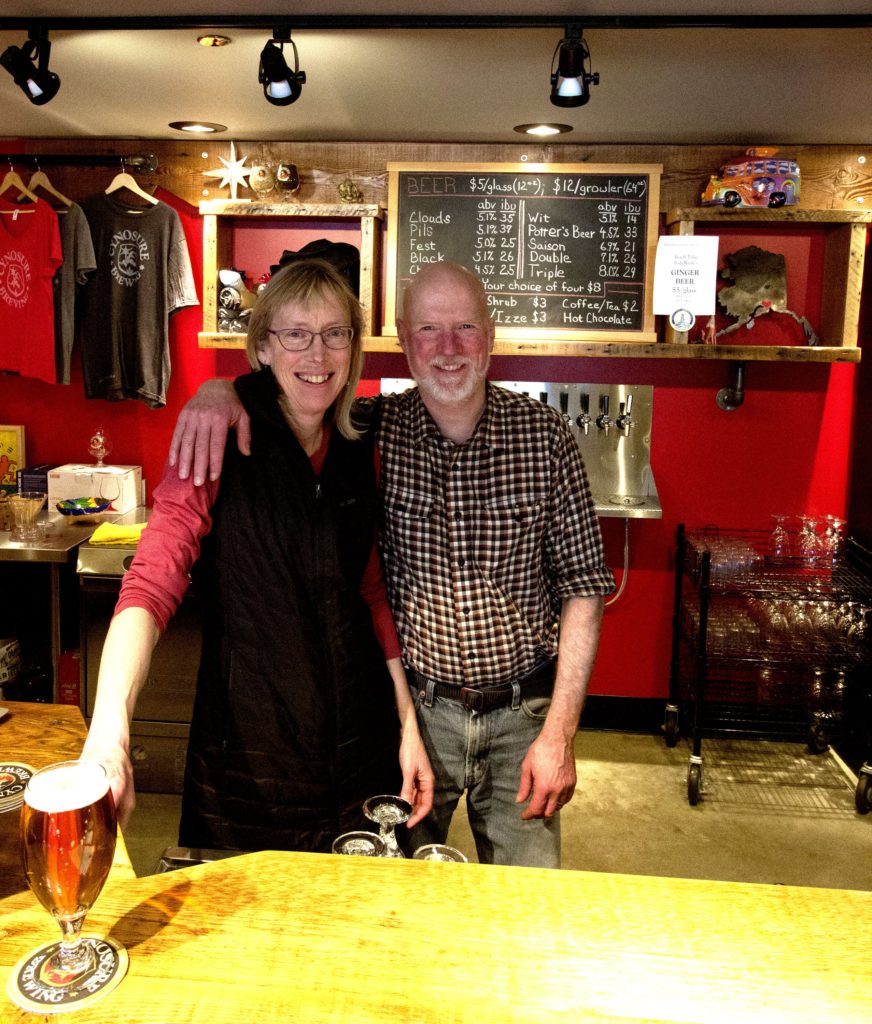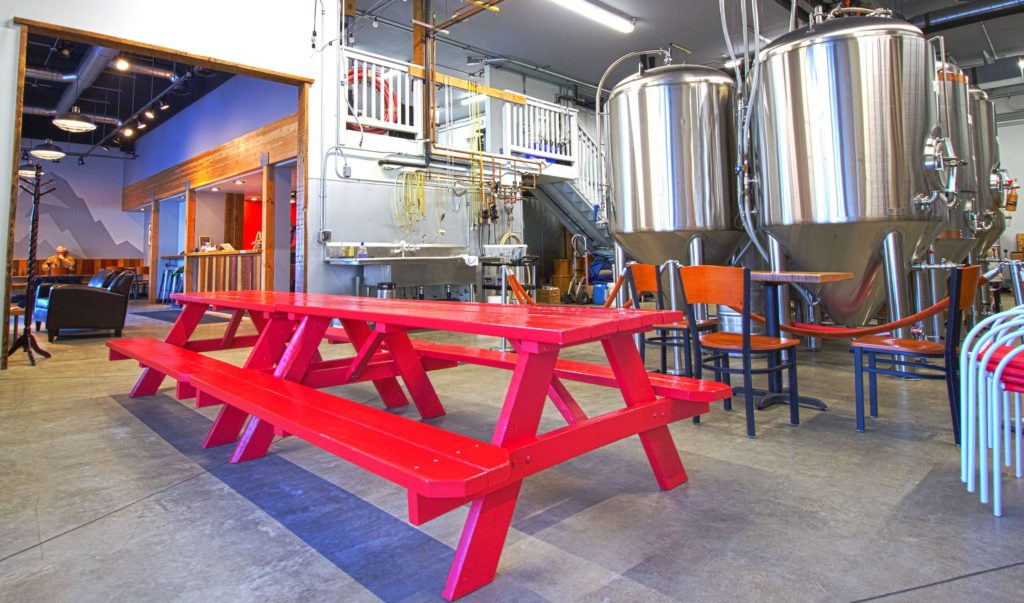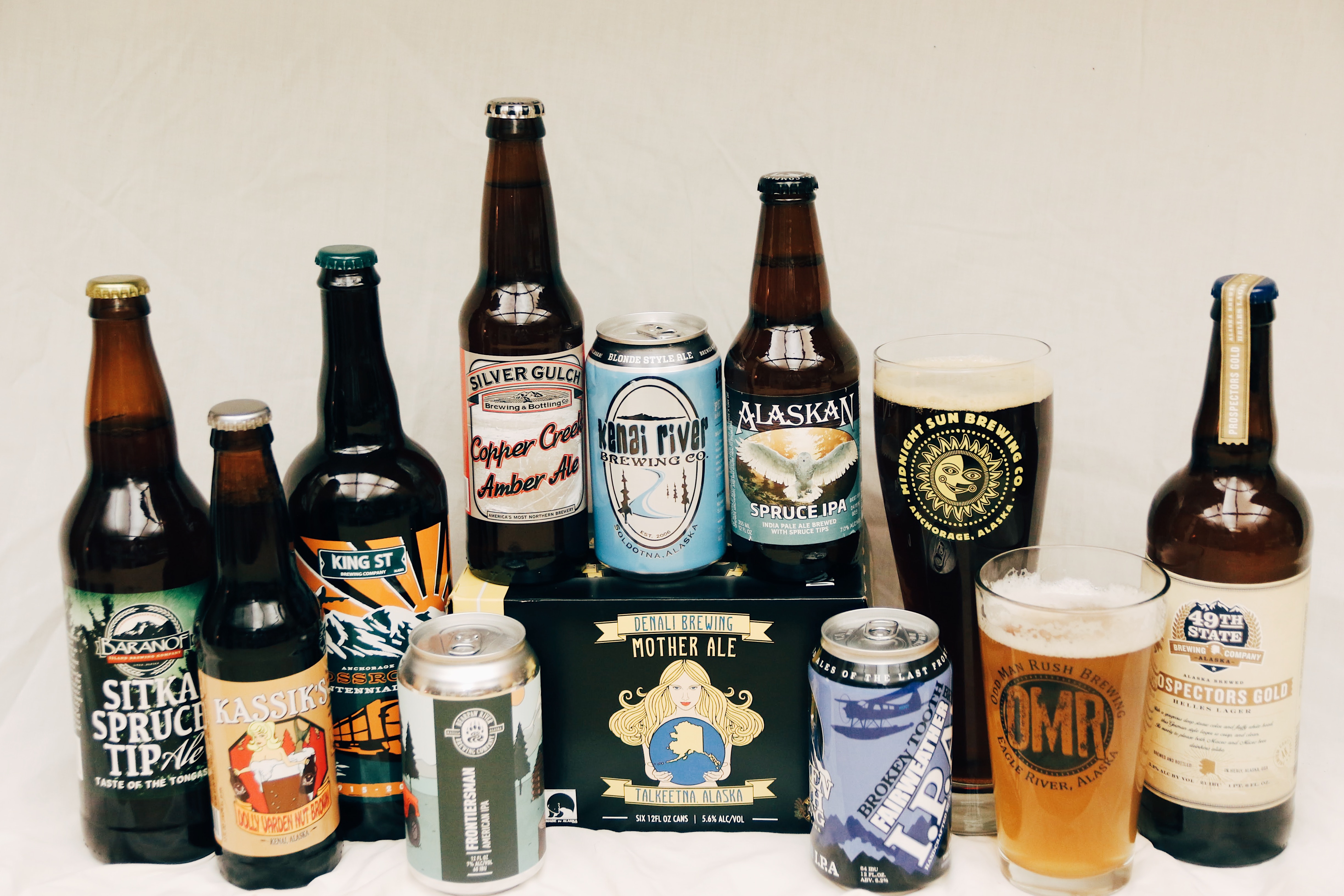Last Frontier guzzles up craft beer
Alaska’s craft brewery and brewpub scene is booming. In 2017, craft breweries and brewpubs totaled 31 in the Last Frontier – the most ever at one time in the state – and were a $340 million industry, according to the Brewers Guild of Alaska.
Since 2005, 23 new breweries or brewpubs have formed and there are no signs of the industry slowing down. Seven more were in various stages of development entering the year. And possibly more remarkable, the industry hasn’t lost a brewery or brewpub for good since 2003.
Local freelance beer writer and historian Bill Howell believes the key turning point for Alaska craft brew’s growth came in 2006.
“… The [Alaska] Legislature altered the law to allow breweries to have tasting rooms and to retail beer [with restrictions],” Howell said.
The change allowed for tap rooms to develop. Before, breweries had to work specifically through a distributor. This limitation created narrow margins and many breweries took several years to turn a profit – and some failed –Howell said.
The groundbreaking and award-winning success of Alaskan Brewing Company in 1986 demonstrated that the state could support a brewery. It also proved that breweries could overcome the cost of doing business hundreds or thousands of miles away. On the other hand, the proximity of the state to brewing hotspots like Seattle and Portland also helped familiarize Alaskans with well-crafted brews.

Clarke Pelz, an owner of Cynosure Brewing of Anchorage, describes why Alaskans are receptive to craft taste and points to the water as an advantage that makes Alaska beer unique.
“I think that the community palate is sophisticated and appreciative of flavorful, locally produced beers,” Pelz said. “I think that we have great water for producing beers, so that helps us brewers to produce good beer.”
Pelz also credits a growing appreciation for locally made products. Knowing that most of the money stays in state is enough for consumers to pay a little bit more for Alaska beers.
The place where something is crafted also has a tremendous impact on the flavor of the beer. Water affects the chemistry of the final product as well as the type of ingredients that grow nearby. Location also affects whether a brewery will decide to be a distributor (Alaskan), a local brewery or taproom (Cynosure), or brewpub (Glacier BrewHouse).

Howell coins a phrase Ben Millstein, manager of Kodiak Island Brewing Company, first used to describe local brewing operations: “The brewery as bakery model.” This means breweries in smaller communities like Kodiak, Homer, Haines and others can remain profitable by remaining local. These breweries are not interested in distributing outside of the town limits. This model can include brewpubs because they focus their attention on a certain part of a larger community.
Some of the challenges Alaska breweries and brewpubs face include taxes, dry communities and licensing. To top it off, Alaska has the second highest excise tax in the nation for beer and spirits. Still, this does not dampen consumption. The state pulls in $40 million annually from this tax, Howell said. The state is also home to several dry communities, mostly in rural areas.
Ryan Makinster, executive director of the Brewers Guild of Alaska, explains why this isn’t a problem for the industry.
“Most of [our member breweries] would not sell even if they were allowed to in dry communities,” Makinster said. “It’s just not cost effective and the market is not big enough.”
A significant change could be coming to the industry. Senate Bill 76 was drafted and awaits ruling in Juneau as to whether licensing will be improved for craft breweries. As the law stands now, breweries or brewpubs can only hold one license at a time.
The aim of SB76 in part is to create a layering where these establishments can hold multiple licenses, sell food if they aren’t now, provide various forms of entertainment, among other changes. The bill is six years in the making, but there are no guarantees it will be voted on during this legislative session.
Much like the challenges Alaska’s brewery industry is overcoming, breweries and brewpubs appear recession resistant. Not recession proof, mind you.
“The only business I know that’s recession proof is the undertaking business,” Howell said. “People haven’t figured out how to not die.”
Makinster says beer sales usually stay flat during a recession in the Lower 48, but this is not the case in Alaska. Beer is an affordable luxury. Again, people will support local and might instead decide to avoid expensive luxuries like vacations in tough times.
But what makes someone want to take the leap and start a brewery in the first place? Pelz, like many other brewers, turned his hobby into a career.
“It’s fun to brew precisely the beers I want to brew.” Pelz said. “It’s fun being responsible for them. It’s been very rewarding developing a community of customers and providing a space for people to enjoy each other’s company, while enjoying our beer.”
The regulatory environment of Alaska’s breweries poses its challenges, but the brewing industry is thriving and local breweries are satisfied they are fulfilling a growing thirst for craft beer in the Last Frontier.
Brewers Guild of Alaska Data
- $340 million industry (2017)
- $84 million in-state spent (2017)
- 31 operating breweries (end of 2017)
- 7 Breweries-In-Planning (entering 2018)
- 2,281 jobs contributed to Alaska’s economy by the brewing industry (2015)
- $169 million generated “through direct spending and the multiplier effect” of spending remaining in the state (2015)
(Prepared by Southeast Strategies)
Fun Facts
- Levi, Cohen, Fuller & Co. Brewery became the first commercial brewery in Alaska (Sitka) in 1874, lasting until 1875
- Anchorage’s first brewery was Prinz Brau Alaska Inc., operating from 1976 to 1979
Years current Anchorage breweries and brewpubs began brewing:
- 1995 – Midnight Sun Brewing Company
- 1996 – Glacier BrewHouse
- 2011 – King Street Brewing Company
- 2013 – Broken Tooth Brewing
- 2014 – Anchorage Brewing Company
- 2015 – Resolution Brewing Company
- 2016 – 49th State Brewing Company (Anchorage location)
- 2016 – Cynosure Brewing
- 2018 – Turnagain Brewing (expected)
Chris Lawrence is a lifelong Alaskan who enjoys music, sports and culture. While not helping write or design for True North, Chris can be seen running, biking or on a pair of skis. Chris currently works for the UAA Athletic Department and spent a summer writing for the Alaska Dispatch News. A Rebel at heart, he will look to attend Ole Miss for graduate school in hopes of becoming a sports marketer or sports info director.

